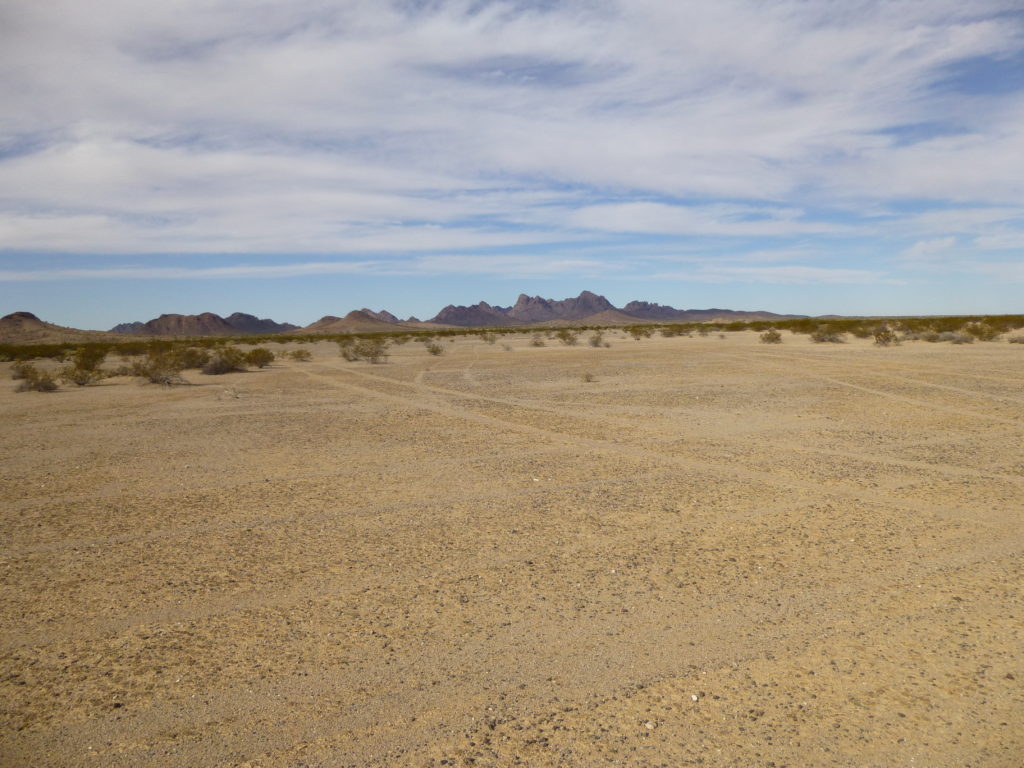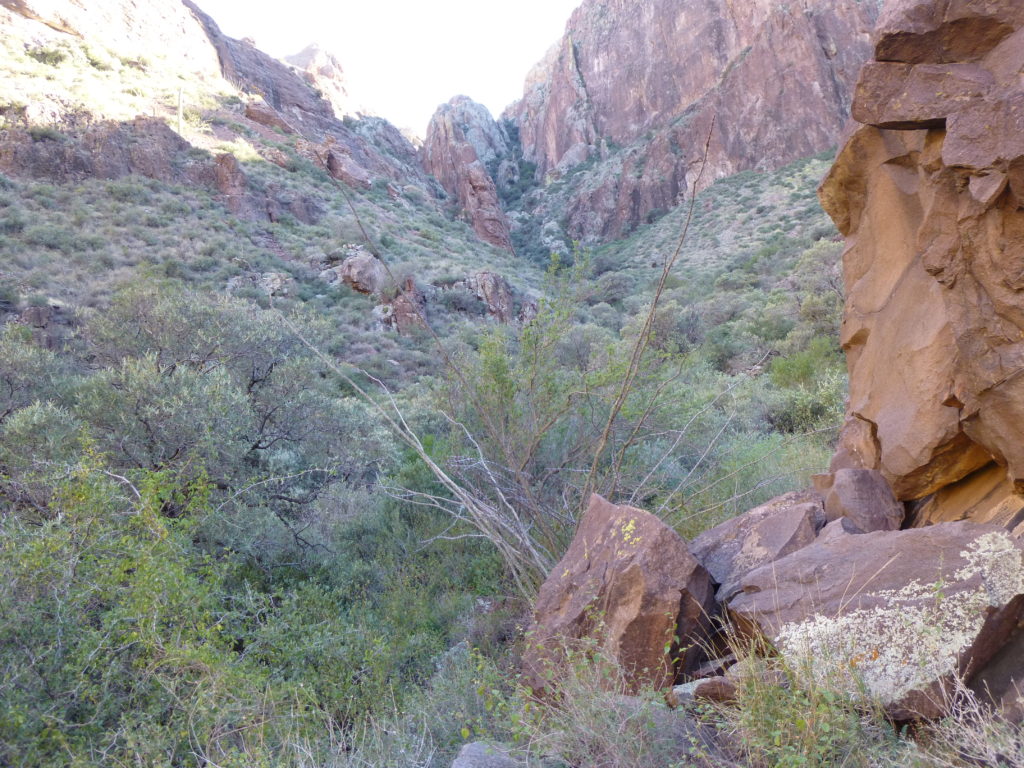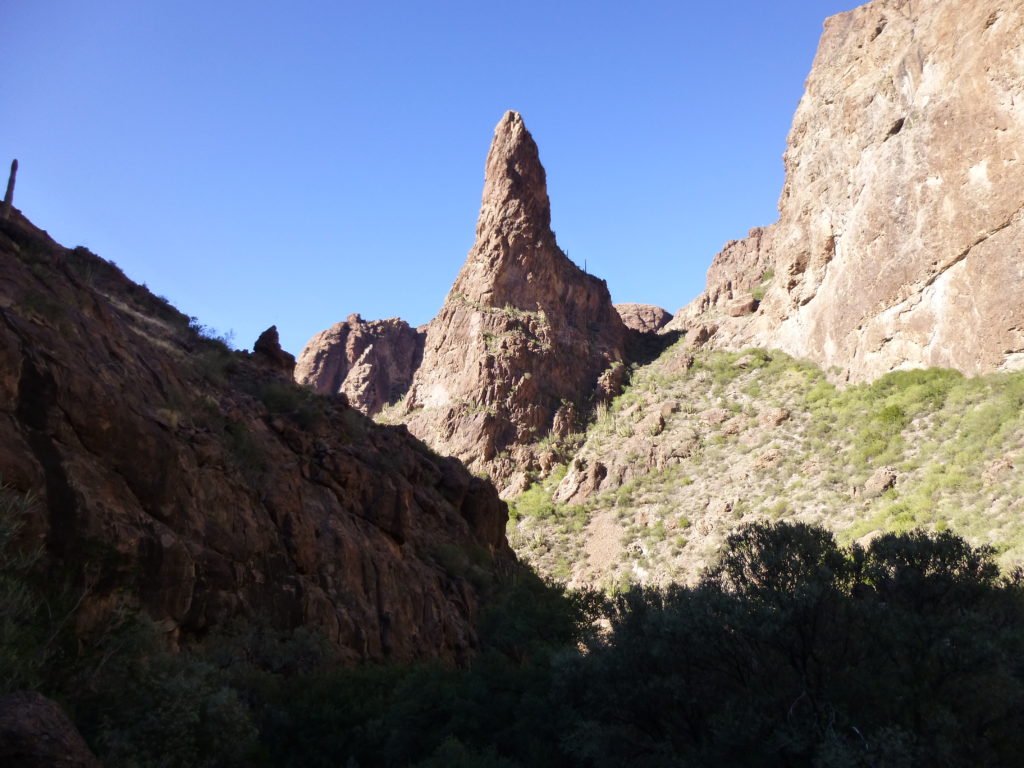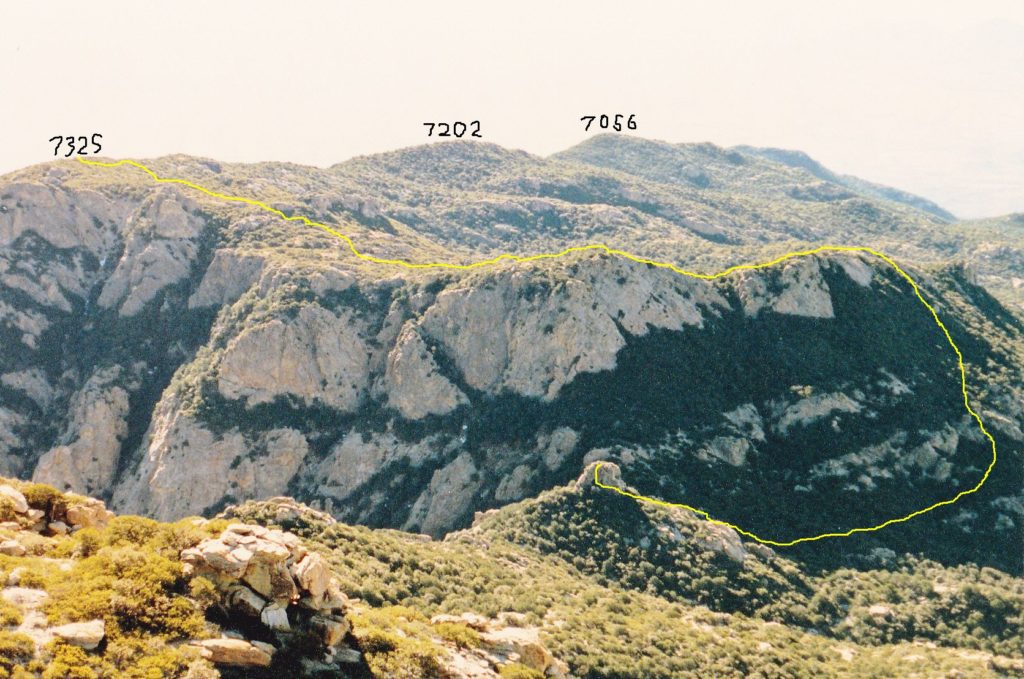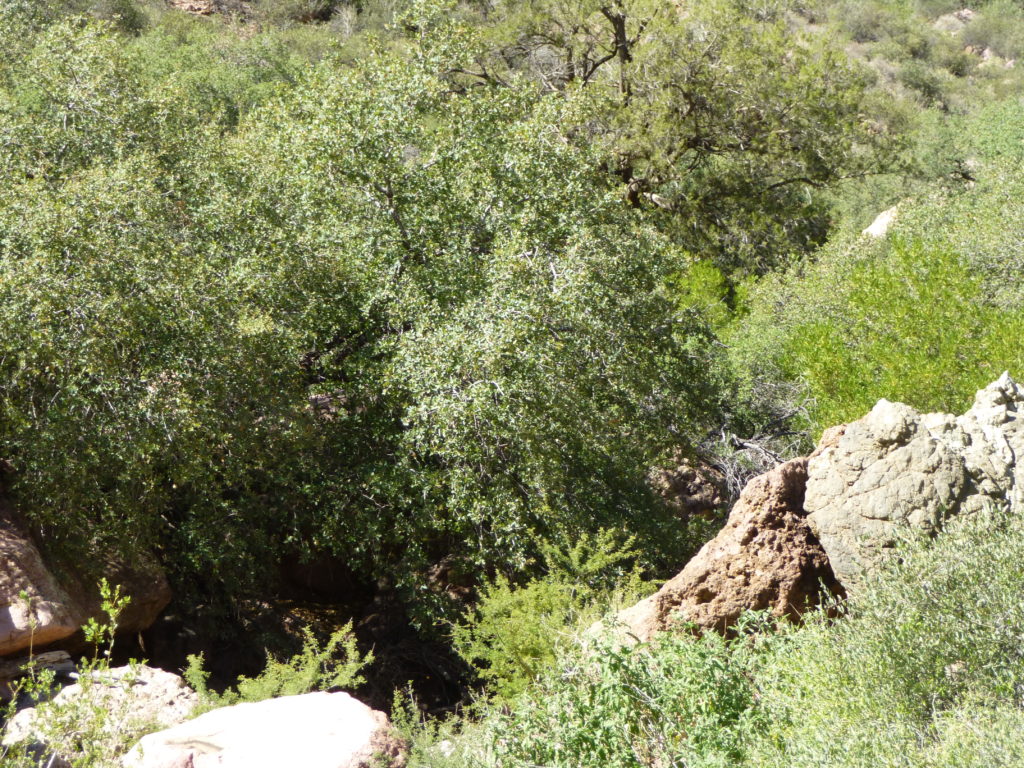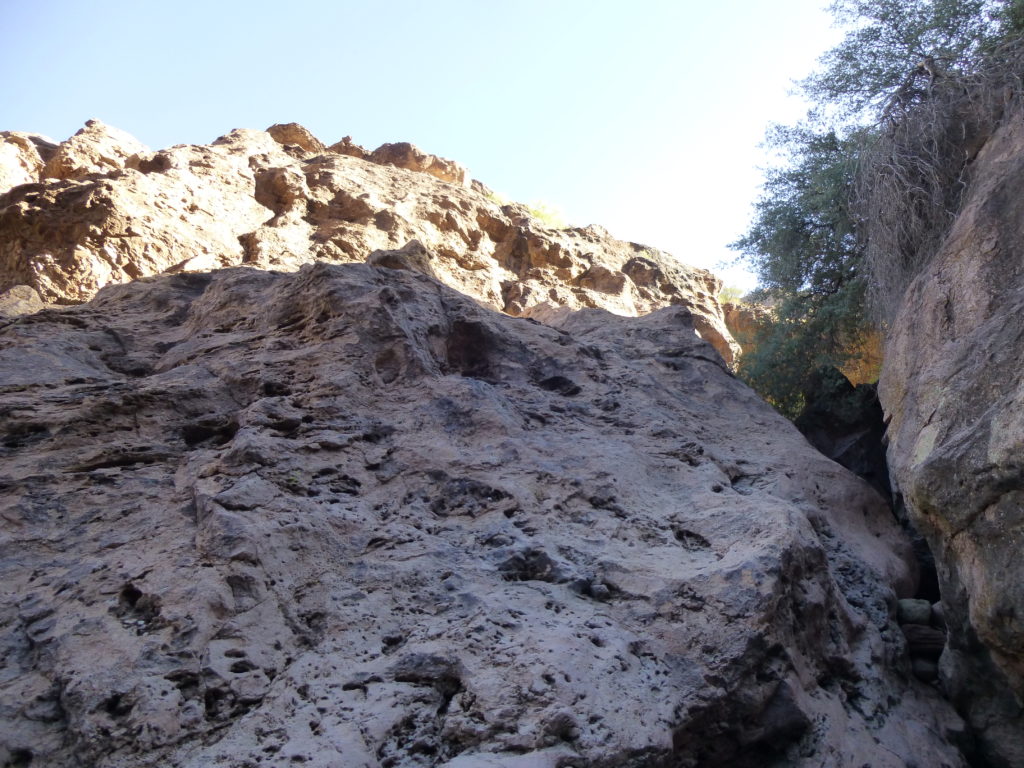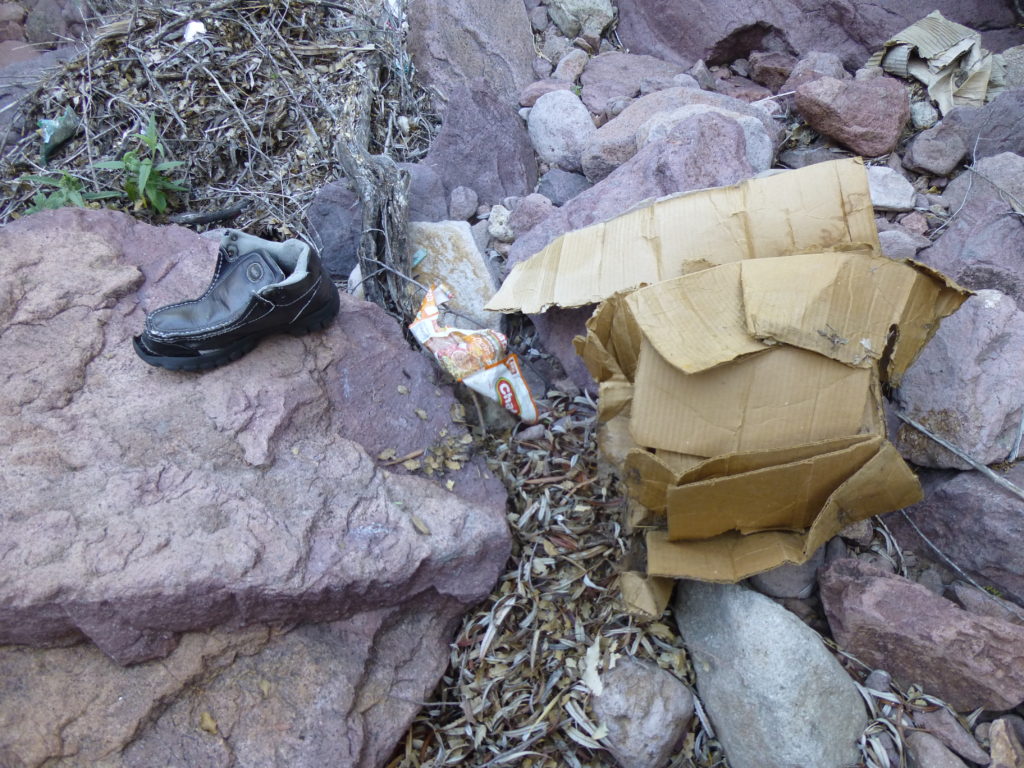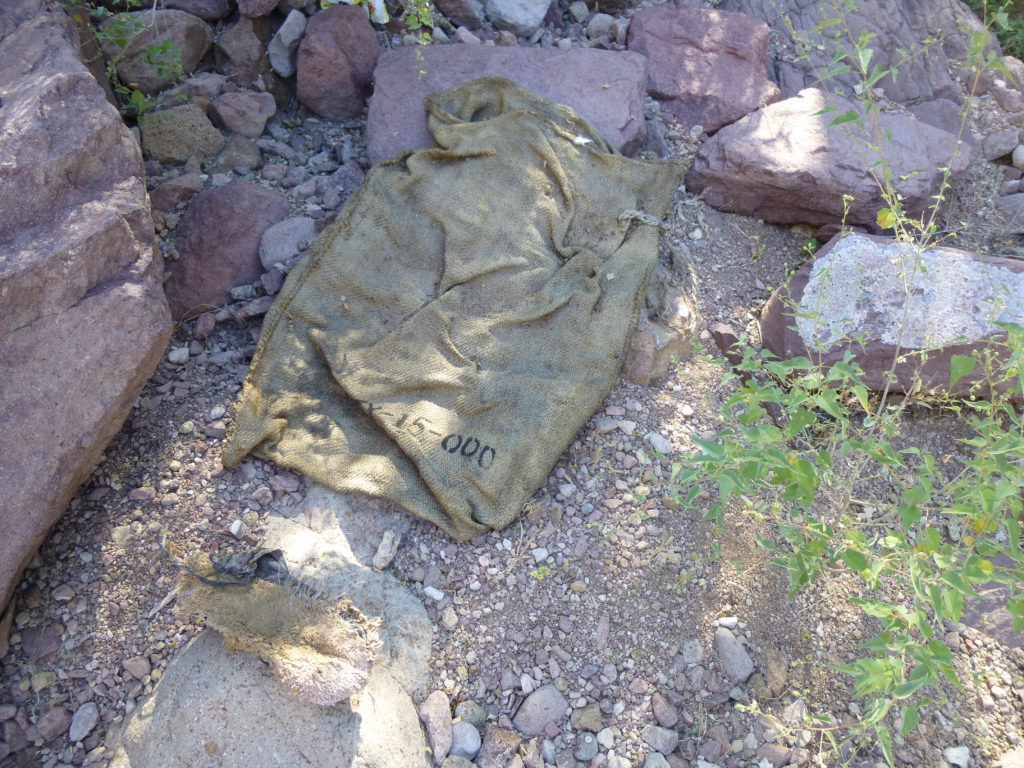It’s a funny word, isn’t it? Does it mean you are whacking bushes? I tried looking up definitions, which nowadays one can do on line for almost everything. Here are some that I found.
- To live or travel in wild or uncultivated country.
- To fight as a guerrilla in the bush. To ambush someone by surprise or in an underhanded way.
- To beat or cut one’s way through bushes.
The first two may be commonly-enough used, but for my purposes it’s the third that meets my needs.
I’ll be the first to admit that there are other climbers out there who have crafted some really good treatises on the subject of bushwhacking, who have gone deeply into the subject, and I don’t want to reinvent the wheel. Suffice it to say that bushwhacks range from nothing at all to the most outrageously impossible conditions imaginable. Obviously, something like what you see in this photo is no challenge at all. If you can walk around the bushes effortlessly, then the level of bushwhacking difficulty is zero.
Most of the Sonoran Desert is much more heavily-vegetated than what you see above. In fact, it is the world’s most heavily-vegetated. There are many places where you can’t see your vehicle a hundred yards away from where you parked it because of all the trees and bushes.
How much vegetation you have to push through certainly plays a part in how difficult a bushwhack is. Also, the type of vegetation plays a major role – things like cactus and manzanita will challenge you more than walking through tall grass. Steepness of terrain is important. It’s easy to imagine that if you are struggling uphill, you’re going to have a harder time pushing your way through brush than if you have gravity working with you and are going downhill. Even weather plays a part. Imagine facing a nasty bushwhack on a nice day, then again in a rainstorm or snowstorm or sandstorm. Temperature too – you’re going to have an easier time of it if it’s 60 degrees F. instead of a hundred. Even the state of mind with which you approach a bushwhack makes a difference. Someone who does it fairly often is probably better prepared mentally than a novice who seldom engages in the art of the bushwhack.
I think it goes without saying that the worse each of the factors in the above paragraph is, the more difficult the bushwhack will be, so enough said about that. I’d like to skip the easy stuff and jump right into the worst of it, and share with you some of the most outrageous bushwhacks I’ve ever experienced. Come along, and brace yourselves.
See the above photograph? The north-northwest canyon which approaches the summit of Peak 4740 in Arizona’s Ajo Range is a climber’s nightmare. It climbs over 1,800 vertical feet, and every inch of it is choked with vegetation. It starts off bad enough, a mix of brush and small trees. For the most part though, you are able to thrash your way forward. I was barely 15 minutes into it when, imagine my shock, I came upon human remains, those of a young woman. This was about the worst possible way one could imagine to start a climb, and this experience affected me strongly all day.
As you work your way up the canyon, things quickly worsen. The mix of cactus, spiny bushes and trees thickens. The slope steepens too. By the time you’ve climbed 500 vertical feet, your luck is running out, and fast. The trees are getting bigger and closer together. The canyon walls are closing in – the vegetation thickens, and you find yourself struggling to make any forward progress. Every damn thing seems to have thorns. Small waterfalls (dry, of course) block your path and need to be climbed. Vines have appeared by now, choking everything, creating a virtually impenetrable barrier. The canyon has now become devoid of all sunlight – I’m not kidding you, the sun never reaches the bottom of the canyon at this point. By now you’ve climbed 900 vertical feet, and you’re SOL. Any forward movement becomes Class 5 rock, and the bushwhacking is the kind that makes you wake up at night in a cold sweat.
You have two options at this point. Turn around and go home, nursing your many wounds, or side-hill up and across out of the canyon in an attempt to gain an open ridge. I chose the latter, and almost regretted that choice too. It involved a steep, loose climb through horrific bush but nothing worse than Class 3 rock. However, the bushwhacking was so thick and nasty that in places, my foot punched through into thin air along a steep cliff.
Suffice to say that to try to continue up the canyon instead of side-hilling out of it is madness, and has never been done. I considered myself lucky to have made the round trip to the summit in 9+ hours with nothing more serious than a loss of blood and some of my hide. Conclusion – this one is to be avoided at all costs because far enough into it, forward movement is impossible. It certainly was a spectacular canyon in every other sense, though – just look at this amazing spire towering over the base of the canyon.
Here’s another good one for you.
There is a splendid mountain range known as the Rincon Mountains that sits on the eastern edge of the city of Tucson, Arizona. A mere 11 air miles from bustling neighborhoods, you could find yourself in the heart of a wilderness area – not just a conventional wilderness area devoid of roads, but a wilderness of pain and suffering. That’s because this spot to which I’m referring sits at the head of a feature known as the Valley of the Moon. It’s a curious-sounding name, isn’t it? Only 3 climbers are known to have ever visited the spot, and 2 of them had sense enough to have arrived there by a more sensible route from the east. Yours Truly didn’t have that much sense, and chose a different path, which was almost his undoing. Then began one of the ugliest bits of climbing I’ve ever done in my 58 years in the mountains. Here is a description of how I dealt with this situation, beginning with how I approached the base of the actual climbing.
I started down from a rocky tower on a descending traverse, skirting below some cliffs and trying to not get tangled up in them. The going was horrible, small trees mixed in with manzanita and the occasional prickly-pear cactus. I finally got far enough over, to a point where I could begin to start uphill again. The manzanita became thicker, closer together. I looked for lanes between it but rarely found anything I could use. When I climb, I always wear long pants and long sleeves, mainly to protect against the sun. Today, I was glad to have it for the bushwhacking.
My uphill progress was glacial – it felt like I wasn’t getting anywhere. I tried climbing over it, through it, even under it. Of course, my full-size backpack was a real hindrance – it kept getting caught. I was in the middle of some of the healthiest manzanita to be found anywhere on the planet. Taller than I was, as thick as could be. Its branches are like spring steel, very hard to break. You push against it and it pushes right back. I remember vividly how at one point I was lying under a bush, my face in the dirt, trying to crawl forward, my pack caught on branches above me and unable to move. I also recall standing on the steep mountainside surrounded by a sea of manzanita – it looked equally awful in every direction – and swearing at the top of my lungs, as if somehow that would make things better. Things were not only about as bad as they could be, but a great deal worse. The stuff was soul-destroying. I bravely tried to keep going, but how painfully slow was my progress. It was the type of climbing that I had only previously experienced in nightmares.
They say, about bushwhacking like that, that if it doesn’t kill you it damages you. Well, I was damaged alright. By the time the slope eased up and things leveled off, my clothes were shredded. I’ve always wished I had taken a picture of myself at that point. My shirt was torn into strips, from shoulder to wrist, the front too (the backpack had shielded my back from the manzanita). My pants were torn into shreds and of little use for the rest of the trip – I would have been almost as well off just in my underpants. And there was blood aplenty – it looked like I had been attacked by a pack of badgers. It had taken me more than 2 hours to travel a distance of only 4,000 feet from my starting point. Here’s a photo which sums it up. Allow me to describe what you’re seeing. It starts in the lower part of the photo, from the small rocky tower, then drops down into the dark vegetation in the bottom right part of the photo. I traversed across that, then climbed straight up the mountainside on the far right. That part of the climb was the worst of it, although there was still plenty of misery all the way across to Peak 7325 in the upper left part of the photo. Even after that section of the climbing was done, the misery continued for miles more down across Point 7202 and Point 7056, descending lower and lower to finally reach the desert floor thousands of feet below after a long day of hellacious bushwhacking.
And here’s another real doozie, one day up the South Fork of Alamo Canyon.
As I continued on up the canyon, things soon changed. The brush closed in around me, and it became a real struggle to push my way through it. There would be short stretches of good going, but the brush was never far away and always waiting to torment me as I pondered how to get through the next bit.
As if the brush weren’t bad enough, there was endless boulder-hopping. At times, the walls would close in, forcing me to go around through the relentless bush or climb steeply up to bypass such places. I had to climb up 75 feet to get around this one.
In some places, the brush was so thick I had to use flagging to mark my way, the better to retrace my steps later. Forward movement became incredibly slow. There was one horizontal stretch of 3,900 feet that took me 1 hour and 5 minutes to accomplish – that works out to 60 feet per minute, or less than 7/10 of a mile per hour. You could almost crawl that fast (actually, I was crawling for several stretches). That soul-destroying brush was really starting to get to me.
To make matters worse, I started seeing more and more signs of drug smugglers – things like big pieces of cardboard, which they use to wrap bundles of drugs. And large burlap bags, also used to transport the drugs.
Aside from the rare open spot, what I now found myself in was the type of climbing that I could have only previously imagined. There were several moments, as I caught my breath after a particularly-bad thrash, when I seriously questioned what the hell I was doing out there. It had taken me 3 full hours to move 1.4 miles up this South Fork, for an average speed of less than 1/2 mile per hour.
In the Atlantis of my youth, I lived in the Coast Range of British Columbia. There, 40 and 50 years ago, I cut my eyeteeth learning how to bushwhack. Few places on earth can surpass the tangled mess of undergrowth that thrives there in the coastal rain forest. There were numerous times when I had a climb planned down to the last detail, only to get out and make a start and then chicken out because the bush was so daunting. It could compare favorably with the bush of Chilean fjord or tropical jungle.
Here in my Sonoran Desert, I sometimes joke that a climber needs a good, solid bushwhack from time to time to keep them honest. Maybe, but regardless of how often or seldom you might end up thrashing your way through one, if you’ve had the experience, it won’t be soon forgotten.

